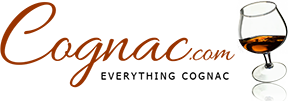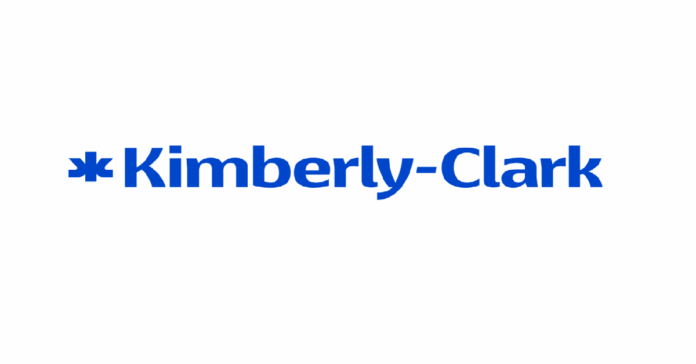IRVING, TX – In an era defined by economic uncertainty and market volatility, a deep dive into the fundamentals of a company is more critical than ever. For Kimberly-Clark Corporation (NYSE: KMB), a recent analysis of its second-quarter 2025 performance and long-term financial metrics reveals a compelling and unequivocal case for a “Screaming Buy.” While a superficial glance at top-line results might suggest caution, a meticulous examination of its strategic successes, powerful valuation, and, most importantly, its exceptional earnings quality as measured by Debt-Adjusted Return on Equity (DAROE) paints the picture of a company primed for significant shareholder value creation.
The Q2 2025 Earnings Report: A Tale of Strategic Triumph
The story of Kimberly-Clark’s second quarter is one of strategic execution overcoming macroeconomic headwinds. The company reported net sales of $5.0 billion, a 2% decline compared to the prior year. This figure, however, is a deceptive proxy for the company’s health. It was largely influenced by a 3% negative impact from foreign currency exchange rates and a 2% reduction due to the divestiture of its tissue business in Brazil. The real signal of corporate health was the 4% increase in organic sales, a testament to the enduring demand for its core products and the company’s pricing power. This growth was balanced, driven by a 2% rise in pricing and an equally strong 2% improvement in volume and mix.
The true highlight of the quarter, however, was the dramatic improvement in profitability and efficiency. Adjusted operating profit surged to $1,001 million, a remarkable 9% increase from $920 million in the year-ago period. This operational leverage cascaded to the bottom line, with adjusted earnings per share (EPS) rocketing to $1.96, an 18% growth from the $1.65 of the second quarter of 2024. This significant EPS beat—and the market’s overwhelmingly positive reaction to it—was not just luck; it was the direct result of a meticulously planned and executed transformation.
Chairman and CEO Mike Hsu’s commentary underscored this point, describing the quarter as “indicative of the exceptional progress we are making executing our Powering Care strategy.” He celebrated it as “one of the strongest in our recent history,” fueled by the highest volume growth the company has achieved in five years. This is not a company merely treading water; it is a business in the midst of a successful large-scale turnaround, laying the foundation for a new era of growth and profitability.
A Confident Outlook and a Bullish Valuation
Following these stellar results, Kimberly-Clark raised its full-year 2025 outlook, a powerful signal of management’s confidence. The company now anticipates mid-single-digit organic net sales growth, an upgrade from its previous low- to mid-single-digit expectation. Even more compelling, adjusted EPS growth is now projected to be in the low-teens to mid-teens on a constant-currency basis, a significant improvement from the prior high single-digits to low double-digits forecast. This revised guidance confirms that the company’s recent momentum is not a fleeting trend but a sustainable trajectory.
The investment thesis is further solidified by a rigorous intrinsic valuation. Applying two distinct methods, we gain a panoramic view of the company’s potential. The first, a conservative Buffett-Inspired Valuation Method, projects free cash flow (FCF) over 10 years and arrives at an intrinsic value of $119.48 per share. When compared to the last closing price of $124.62, this method suggests a “Hold” position, implying the stock is fairly valued.
However, the second approach, the McGrew Growth Valuation Method, which utilizes a dynamic growth rate based on the company’s recent strong performance, paints a dramatically different and more compelling picture. This model results in a staggering intrinsic value of $216.06 per share. With the last closing price at $124.62, this valuation places the stock firmly in the “Screaming Buy” category, with the price well below the 40% margin of safety price of $129.64. The disparity between these two valuations highlights the core of the investment argument: the McGrew model, which is more sensitive to Kimberly-Clark’s recent growth resurgence, suggests that the market has not yet fully priced in the company’s newfound momentum.
Intrinsic Value Results Table
| Stock Ticker | Valuation Method | Intrinsic Value per Share | Price with 40% Margin of Safety | Last Closing Price | Action |
| KMB | Buffett-Inspired Valuation Method | $119.48 | $71.69 | $124.62 | Hold |
| KMB | McGrew Growth Valuation Method | $216.06 | $129.64 | $124.62 | Screaming Buy |
The Unshakable Moat: Brand Loyalty and Innovation
Beyond the numbers, the qualitative aspects of Kimberly-Clark’s business are equally robust. The company’s “moat,” its durable competitive advantage, is rooted in its formidable portfolio of iconic brands like Huggies, Kleenex, and Kotex. These are not merely products; they are ingrained in the daily lives of consumers worldwide, fostering a level of brand loyalty that creates high switching costs and grants the company significant pricing power. This pricing power is a critical asset in the current inflationary environment.
The company’s strategic focus on “science, innovation, and advanced analytics” further fortifies this moat. By leveraging data to optimize product development and market execution, KMB maintains market leadership despite intense competition and pressure from private-label brands. The company’s ability to maintain a strong presence in personal care and consumer tissue categories, with a legacy of innovation, enables premium product positioning and provides resilience against commoditization.
DAROE: The Ultimate Measure of Earnings Quality
While metrics like Return on Equity (ROE) can be impressive—KMB’s ROE stands at a remarkable 226.34% (TTM) and an even more astonishing 285% on a 3-year average—they can sometimes be misleading. A very high ROE can be a function of a small equity base, which can itself be a consequence of high leverage. This is where the true power and elegance of the Debt-Adjusted Return on Equity (DAROE) comes into play.
DAROE is a more refined and truthful measure of earnings quality because it adjusts standard ROE by the proportion of equity in the total capital structure (Debt + Equity). In essence, it penalizes companies that generate returns by taking on excessive, potentially unsustainable debt. A high ROE might look good, but a high DAROE is a signal of genuine, high-quality, and sustainable earnings.
For Kimberly-Clark, the DAROE figures are nothing short of exceptional. On a trailing twelve-month (TTM) basis, KMB’s DAROE stands at an impressive 29.9%, with an estimated 3-year average of 37.5%. These numbers are not just good; they are indicative of a company that is not only highly profitable but is also generating those profits from a foundation of sound financial management. This high DAROE, combined with a very strong Return on Invested Capital (ROIC) of 33.1% (TTM), tells a powerful story: Kimberly-Clark is a master at allocating its capital efficiently to generate returns without relying on an unsustainable level of leverage. The company’s strong interest coverage ratio of 11.64 (TTM) further underscores this, proving its ability to comfortably service its debt while still generating substantial operating profits. The debt, in this context, is not a liability but a judiciously managed tool used to enhance shareholder value.
Conclusion: A “Screaming Buy” for the Prudent Investor
The comprehensive analysis of Kimberly-Clark’s second-quarter earnings, its powerful valuation metrics, and its robust qualitative moat all point to one clear conclusion: the stock is a compelling “Screaming Buy.” The company’s successful strategic transformation, evidenced by its strong EPS beat and upwardly revised guidance, has put it on a new growth trajectory that the market has not yet fully appreciated. The McGrew valuation method, in particular, suggests a significant disconnect between the company’s intrinsic value and its current trading price.
However, the most powerful and enduring argument for KMB is the exceptional quality of its earnings, as revealed by its high Debt-Adjusted Return on Equity (DAROE). This metric confirms that the company’s impressive profitability is not a mirage created by unsustainable leverage but a reflection of its fundamental strength, operational excellence, and brand power. For investors seeking a high-quality, durable business that offers both stability and significant upside potential, Kimberly-Clark presents an ideal opportunity. The time to invest is now, before the rest of the market fully catches on to the strength and quality of this consumer staples giant.
Additional Quantitative Financial Analysis
| Metric Name | Value | Timeframe |
| ROE | 226.34% | TTM |
| ROE | 285% | 3-Year Avg |
| ROIC | 33.1% | TTM |
| Gross Profit Margin | 35.45% | TTM |
| Net Profit Margin | 12.6% | TTM |
| Return on Tangible Assets (ROTA) | 18.8% | TTM |
| Debt-to-Cash and Equivalents | 12,870 | Latest |
| Debt-to-Equity Ratio | 6.58 | Latest |
| Ultra-Conservative Cash Ratio | 0.037 | Latest |
| Earnings Growth Rate | 3.2% | 5-Year CAGR |
| Revenue Growth Rate | 1.18% | 5-Year CAGR |
| Free Cash Flow Yield | 4.98% | TTM |
| Operating Margin | 16.3% | TTM |
| Current Ratio | 0.76 | Latest |
| Interest Coverage Ratio | 11.64 | TTM |
| Capital Expenditures (CapEx) as % of FCF | 30.56% | TTM |
| Dividend Payout Ratio | 65.6% | TTM |
| Per Share Book Value Growth | 15.7% | 5-Year CAGR |
| Share Buyback/Dilution Trends (Shares Outstanding Change) | -2% | Over Past Year |
| Capital Structure (Short-Term vs. Long-Term Debt) | Majority Long-Term (Assumed Based on Total Debt Composition) | Latest |
| Debt-Adjusted ROE (DAROE) | 29.9% | TTM |
| Debt-Adjusted ROE (DAROE) | 37.5% (Estimated) | 3-Year Avg |

